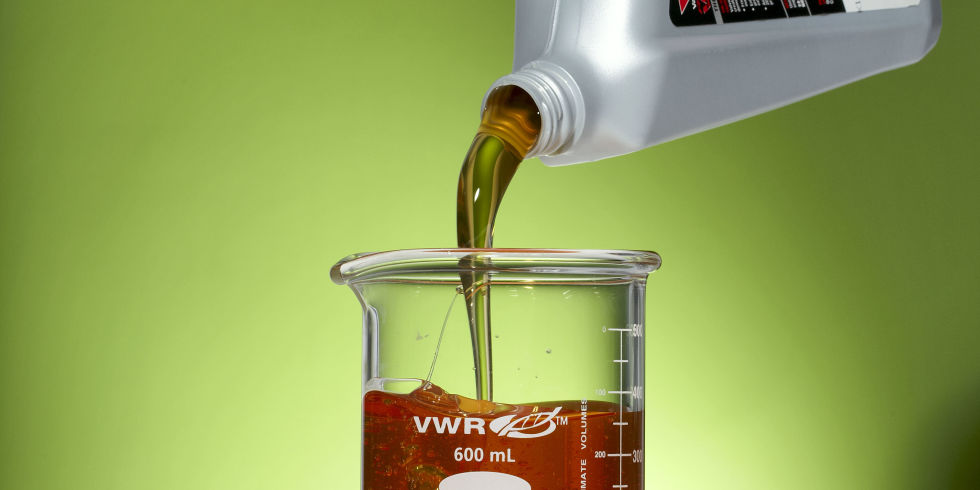There are many choices when it comes to picking the appropriate oil for your car’s engine. Our guide breaks down your choices to help you in the quest to change your oil.
Choosing the correct motor oil for your car might seem daunting but the best way to start is by checking out the starburst symbol that indicates the oil has been tested and meets the standards of the American Petroleum Institute (API). In addition, there’s a 2-character service designation on the container. API’s latest service standard is “SL.” SL refers to a group of laboratory and engine tests, including the latest series for control of high-temperature deposits. Your third task is to pick the viscosity (thickness) that’s suitable for the temperatures your vehicle normally operates in (check your owners manual), and you’re done. Well, not quite. There’s a whole lot more to the story than that.
UNDERSTAND THE LABELS
These are the labels you’ll find on every container of reputable motor oil. The API donut on the right tells you if the oil meets the current SL service rating (C for diesel engines). It also provides the SAE (Society of Automotive Engineers) viscosity number and tells you if the oil has passed the Energy Conserving test. The starburst symbol on the left indicates that the oil has passed the tests listed for SL service.
Is oil really the lifeblood of an engine? That’s a long-popular analogy, but it’s really not an accurate description. Blood carries nutrients to cells, but it’s air that carries fuel—the “nutrition”—for an engine. However, without oil to lubricate and cool moving parts, keep them clean and help to seal the pistons in the cylinders, the engine would run for only a matter of seconds, then sieze. So, yes, oil is important.
Oil is so important that we want no less than the best the engine can get—for a good low price, of course. Now, what if you could custom-blend the oil so it had exactly the characteristics you believe that your vehicle needs for the type of driving you do?
Sounds pretty neat, and we were given the opportunity to do just that at the Valvoline lab in Lexington, Ky. When we were finished, we had an oil we thought would be just right for upcoming summer weather in short-trip driving around the New York City area.
That was our one shot at playing lubricant scientist, but the experience produced only enough oil for a top-up. So at the next oil change, we’ll have to pick from an off-the-shelf assortment–like everyone else. But we think we’ll do a better job of selection now, thanks to a short course in engine oil blending from Valvoline Technical Director Thomas Smith. Here’s what we learned.
VISCOSITY
Viscosity (a fluid’s resistance to flow) is rated at 0° F (represented by the number preceding the “W” [for Winter]) and at 212° F (represented by the second number in the viscosity designation). So 10W-30 oil has less viscosity when cold and hot than does 20W-50. Motor oil thins as it heats and thickens as it cools. So, with the right additives to help it resist thinning too much, an oil can be rated for one viscosity when cold, another when hot. The more resistant it is to thinning, the higher the second number (10W-40 versus 10W-30, for example) and that’s good. Within reason, thicker oil generally seals better and maintains a better film of lubrication between moving parts.
At the low-temperature end, oil has to be resistant to thickening so that it flows more easily to all the moving parts in your engine. Also, if the oil is too thick the engine requires more energy to turn the crankshaft, which is partly submerged in a bath of oil. Excessive thickness can make it harder to start the engine, which reduces fuel economy. A 5W oil is typically what’s recommended for winter use. However, synthetic oils can be formulated to flow even more easily when cold, so they are able to pass tests that meet the 0W rating.
Once the engine is running, the oil heats up. The second number in the viscosity rating–the “40” in 10W-40, for example–tells you that the oil will stay thicker at high temperatures than one with a lower second number–the “30” in 10W-30, for example. What’s really important is that you use the oil viscosity your car’s owner’s manual recommends.












